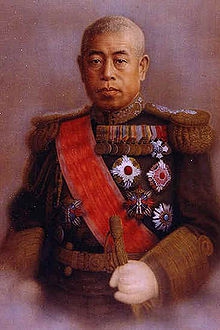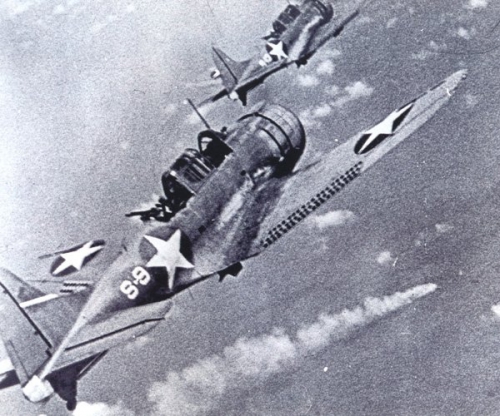To see America as it once was, go back to the three days from 4 to 7 June, 1942. During the six months after the devastating Japanese attack on the principal US Pacific base at Pearl Harbor, Hawaii, US and allies forces across the west Pacific were being mauled by the Imperial Japanese Navy.
Japan’s leading naval strategist, Adm. Isoroku Yamamoto, was planning a decisive action near Midway Island to lure America’s three aircraft carriers into battle and sink them.
The USS carriers Enterprise, Hornet and Yorktown had been sent away from Pearl Harbor before the Japanese attack. Had they been in port, Japan would have won the Pacific War on 7 Dec 1941. But they were not, strongly suggesting foreknowledge by the pro-war Roosevelt administration of Japan’s plans.
In fact, US naval code-breakers had deciphered many of Japan’s naval and diplomatic codes that Tokyo believed were secure. The US also broke many of Germany’s codes. Almost eight decades later, the US National Security Agency continues this code-breaking tradition. Small wonder the US is so obsessed with communications security and ELINT, or electronic intelligence. They were key elements in America’s WWII victory.

Yamamoto had made a grave error during the Pearl Harbor attack. He should have sent his powerful battleships to direct attack the US base with naval gunfire. There was concern about US coastal 16 inch batteries on Oahu, but Yamamoto should still have bombarded US oil and repair facilities at Pearl Harbor. Destroying them would have given Japan control of the Pacific for at least a year. In the event, his battleships served little useful purpose during the war and were mostly sunk by later US airstrikes.
Widely dispersed Japanese naval forces, with four fast carriers, moved towards Midway, a tiny atoll 3,500 miles west of Hawaii, to draw the US Navy into battle.
What Yamamoto did not know was that US naval intelligence was reading all of his orders and tracing movement of his ships. Or that he was facing three of the finest admirals in US history: Chester Nimitz, Frank Fletcher and Raymond Spruance.
Meanwhile, Adm. Yamamoto had to dispatch a strong navel force to the remote US Aleutian Islands off Alaska to secure backing by the Imperial Japanese Army for the coming Midway battle. Throughout WWII, Japan’s army and navy operated at cross-purposes or as rivals. The army wanted to attack Soviet Siberia while the Navy was determined to capture oil sources in SE Asia. There was almost no coordination between the two and the Emperor failed to impose unity of command.
In a near-miraculous example of American can-do spirits, the carrier ‘Yorktown,’ badly damaged at the Battle of the Coral Sea, was rushed back into service to the astonishment of the Japanese.
The two fleets began searching for one another – a process in pre-radar days of blind luck, like a knife fight in a pitch-black room. Of course, the US knew where many of the Japanese ships were. But once Japan’s fleet moved, it was quickly lost again.
Carrier warfare is one of the consummate military arts, a process demanding absolute technical expertise, top command skills, steel nerves, and a lot of luck. Japan’s admirals, Yamamoto, Nagumo, and Kondo, were experienced and skilled but America’s commanders ranked with Britain’s admirals Nelson and Cochran.
The key to the upcoming battle, which was all beyond visual range, was searching. US land and carrier planes kept flying over search patterns seeking the Japanese carriers ‘Akagi, Kaga, Soryu and Hiryu,’ all veterans of the Pearl Harbor attack. The Japanese searched even more intensely. Ironically, a Japanese floatplane that was to search a quadrant in which the US carriers were steaming was badly delayed by mechanical problems and failed to locate the US warships.

At 0430 on 4 June 1943, Adm. Nagumo launched air attacks on Midway, which was defended by US Marines. As the Japanese attack intensified, Pearl Harbor reportedly sent them a message, ‘what can we send you?’ Came the insolent reply (my father was a Marine in the 5thDivision), ‘send us more Japs.’
Nagumo kept half his torpedo plans and dive bombers armed and in reserve in case US warships were sighted. At 0800, a Japanese search plane reported sighting US carriers while Nagumo still kept attacking Midway. Unbeknown to him, Adm. Fletcher had already ordered his torpedo planes and dive bombers to attack Nagumo’s fleet that had been spotted by a US PBY flying boat and the heroism of squadron commander C. Wade McClusky.
At 0920, US torpedo squadron 6 from Enterprise flying obsolescent `Devastator’ aircraft attacked the Japanese carriers. The squadron was massacred by Japanese Zero fighters flying top cover. At least six US Mark 13 torpedoes hit the Japanese carriers yet failed to explode. US torpedoes were notoriously unreliable as compared to the deadly Japanese long-lance torpedoes.
All 15 of torpedo squadron 6’s Devastators were shot down. At this dark moment, three squadrons of Douglas Dauntless dive bombers from Enterprise and Yorktown arrived while the Japanese were distracted by the torpedo attacks. Worse, the Japanese carriers were in the process of re-arming their aircraft for new strikes. The carrier decks were covered with bombs, torpedoes and fuel lines.
At 1022 the US Dauntless dive bombers struck. Within minutes, three Japanese carriers, Soryu, Kaga and Akagi were in flames. The surviving Hiryu managed to launch and fatally wound the Yorktown. US aircraft located then sank the Hiryu.
Four of Japan’s six carriers were sunk and many of her veteran pilots and mechanics were killed. Both sides broke off the battle to lick their wounds.
Midway marked the high point of Japan’s Pacific offensive. After the battle, Japan lost the military imitative and went on the defensive for the rest of the war. Japan could not replace the carriers or aircrews lost in battle. As the war continued, America’s mighty industrial base produced more than eight times more warships and transports than battered Japan.
There were many more naval battles after Midway, but no other nation on earth would dare challenge the US Navy. America’s sailors and airmen had won the Pacific War in a day that will reverberate in history.





 del.icio.us
del.icio.us
 Digg
Digg
Les commentaires sont fermés.